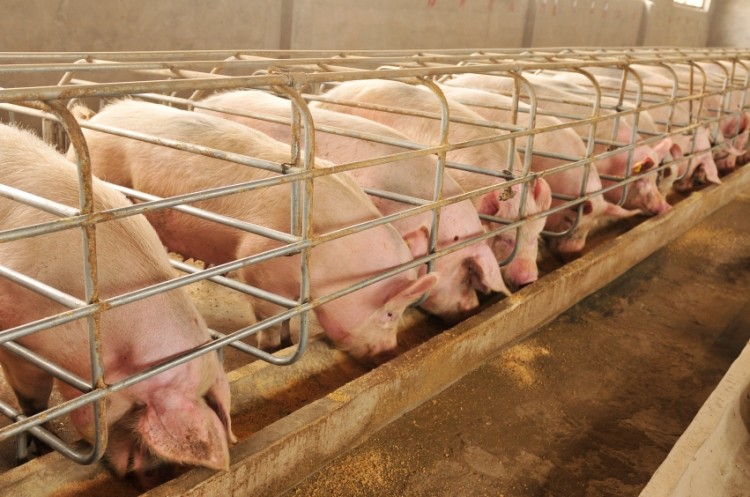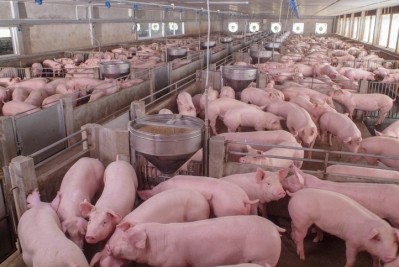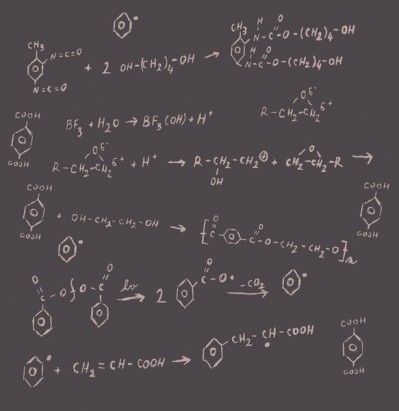Piglet productivity forum: your questions answered

If you did not get the opportunity to tune in, you can still do so as the webinar is on demand for three months. Click here to access the recording.
Joel DeRouchey, extension swine specialist at Kansas State University, Francesc Molist, head of the swine research group at Schothorst Feed Research (SFR) in the Netherlands and Adam Moeser, an associate professor at Michigan State University’s College of Veterinary Medicine, discussed piglet gut health, the conferred benefit of sow nutrition on the progeny, the impact of certain ingredients in piglet diets and whether to feed coarser diets around weaning.
Moeser outlined the stressors that impact the piglet’s gut health negatively. He noted how they come in many forms from psychological or social stresses such as weaning, crowding or transport, to environmental stressors like temperature fluctuations or dietary ones including antigens in the diet.
One of the major findings he and his team hit on is that such stressors in production damage the intestinal defense barriers. Those stressors impair the gut barrier wall, making it leaky, explained Moeser.
He said when this gut begins to leak it loses its ability to absorb nutrients and loses its ability to protect the entry of potential harmful agents and toxins into the gut lumen that cause disease.
Age can impact the severity of this damage, added Moeser.
“The age at which animals or piglets experience these stressors in the environment can have a major impact on long term gut health and development.
For example, we have done a lot of work with weaning stressors and we found if the weaning stress occurs earlier in life, this can have long term damaging effects on the GI tract, as opposed to if the stress occurred later in life with a later weaning age, which the animal can recover from and go on to have a normal gut function,” he told listeners.
Q&A round-up
Listener: What is your experience of adding exogenous butyric acid as feed additive in post weaning diets?
Francesc Molist: In SFR we have not tested the role of butyric acid in terms of improving the health status of piglets in the past few years. But, from what I have heard and from what I have read in the literature, part of the effect of the butyric acid depends on whether the product is coated or not. We know that with some ingredients like wheat bran we can also increase butyric acid production, so I am not sure what the extra benefit would be of adding exogenous butyric acid in comparison to promoting fermentation with feedstuffs.
Listener: What can we really do about piglet diarrhea? It is a very daunting problem for producers. It is very typical in a lot of farms in Germany. This is what is undermining piglet vitality and not birth weight as such, around here.
Francesc Molist: If I understand your problem regarding pre-weaning diarrhea, I think we need to take into account sows more and more. We know that the piglets can get contaminated with clostridia or E. coli coming from the sows. Therefore, I would first suggest vaccinating the sows and secondly to play a little bit with the sow diet in order to, for example, reduce constipation problems or [modify] the substrate that is available for the microbiota. Under these circumstances, feeding lactating sows with high CP diets, which I know is routine in Germany, will not help to solve the problem.
Listener: Do enzymes or probiotics or possibly prebiotics improve piglet health?
Francesc Molist:There is definitely a place for probiotics and prebiotics in improving the health status of piglets. But, as you know, the results are still sometimes variable so we need to fine tune in what situations we can use these ingredients and under what circumstances. [In challenged situations], I think probiotics can be more efficient in improving the health status of piglets than prebiotics. If the piglets are weaned very early and they do not have a developed GIT, I think the prebiotic effect (fermentation) is more difficult to observe.
Listener: What about the use of soluble or insoluble fiber?
Francesc Molist: We are more and more convinced that, in the early weaning period, insoluble and, therefore, usually low fermentable diets have an advantage in respect of soluble or high fermentable diets. However there are many factors playing a role like the rate of fermentation, viscosity, particle size…
Listener: Have you tried to feed piglets some kind of feed with high unsaturated fatty acids like chia or linseed, etc?
Francesc Molist: We have not done trials where we have checked the potential effect of long fatty acids in for example reducing the inflammatory status of the piglets. However, I have also seen nice work conducted by Charlotte Lauridsen from Aarhus University in Denmark and the results were quite positive in terms of promoting the growth of the piglets.
Listener: Do you have any experience with feeding sows CLA? Recent data indicates better sow and litter health and performance.
Francesc Molist: We have not done any trials recently but, based on the literature, the results are variable.
Listener: We are about to make a test in a European country still using a lot of ZnO (1.5kg/T) and colistine (automatically 1kg/T from D28 to D65). We will replace the colistine with 4kg of protected organic acid (27% activity of formic acid + fumaric + citric) as the producer wants to reduce the use of it (too many problems in terms of registration).
Francesc Molist: Good initiative. I think you should also check the quality of the protein sources that you are using to avoid too high crude protein levels.
Listener: What do you think about micro-encapsulation, protected organic acid for example?
Francesc Molist: I think it depends on the function that you are looking for. If you want to enhance the gastric barrier and, therefore, acidify the stomach, I don’t think you need encapsulation if there is no problem [in terms of] product handling at the feed mill or with the odor of product on piglet feed intake. If you want to have a positive effect from organic acids in the distal parts of the GIT, [then] encapsulation, I think, makes sense.
Listener: What are the pros and cons of ZnO application, the dosage, and age of withdrawal?
Joel DeRouchey: It is a common practice to use 2000-3000ppm added Zn oxide for the first 7 days, then 2000-2500 ppm for the next 14 days post weaning. It works very well to improve growth and digestive health. However, feeding more than 28 days post weaning at high levels such as this starts to decrease performance and can cause the pig to have a toxicity level of Zn. The negative is the pigs excrete a high level of Zinc into manure, which can be a concern form a regulation prospective.
Listener: Can we replace an amount of fish protein with herb protein, alfalfa flour protein, for example?
Joel DeRouchey: This is tough one to give a direct answer to. If the diets are balanced correctly for digestible amino acids and diet energy using the herb protein, once may not expect large differences. However, pigs, in general, have a greater feed intake with animal based protein then plant protein for the first weeks after weaning.
Listener: Is there a conflict between valine and isoleucine? Can we modify this conflict in order to be more cost effective?
Joel DeRouchey: Currently, there is a lack of overall data to know when the conflict is present. In most [typical] swine diets, the levels of each are moderate and not high enough to cause a synergistic effect. As long as both are over the animal’s requirement, we have not been concerned about a ratio or [the] level of each of these [in relation] to each other.














